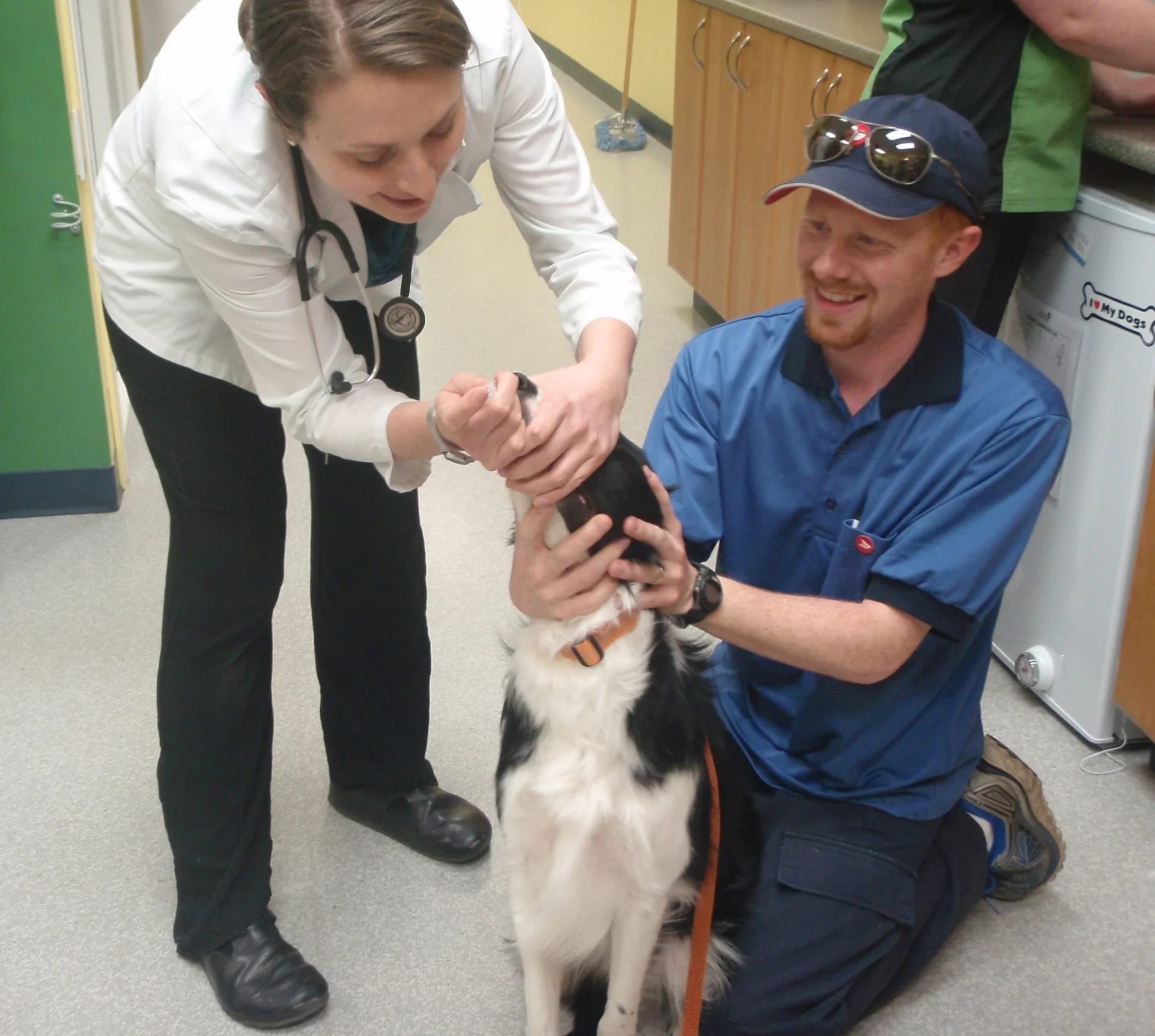Pet identification
Collars and tags can easily fall off and be lost. Microchips and tattoos provide a permanent method of identification.
A patient being scanned for a microchip. Each transponder has a unique number which will allow your pet to be traced back to you.
Microchips are a permanent form of identification. They are small transponders placed under the skin between your pet's shoulder blades. Microchips are registered with a microchip company. If a pet is lost the microchip can be scanned and is then traced back to the owner through the microchip company. Veterinarians and many shelters, such as the SPCA, have scanners to read microchips. Microchip databases are available internationally.
Tattoo on the inside of a dogs ear.
Tattoos are another form of permanent identification. Tattoos are located in the inner ear of the pet. Tattoos are less costly than microchips however they are not registered on an online database, but with the veterinary clinic or shelter who creates the tattoo. Tattoos are composed of numbers and letters as seen in the photo on the right. The letters are specific to veterinary clinics and the numbers are unique to each pet. Tattoos are better suited for animals that won't be traveling out of province or country. The risk with tattoos are that they can fade over time.
Though it's a large needle, microchips can be inserted at any time. Tattoos are given only when a pet is under anesthetic for example at the time of a spay, neuter, or other surgical procedures.
Many owners choose both forms of identifications while others choose to have one or the other.
If your pets already have microchips or tattoos ensure that you keep your contact information up to date on microchip databases and at your veterinary clinic. This will ensure you will be contacted if your pet is found. Having a microchip or tattoo for your pet is only valuable if the Microchip company can contact you based on the contact information you provide.




























![AbbySchroederpuppies[1].jpg](https://images.squarespace-cdn.com/content/v1/5349fe6fe4b044537331aca6/1489875054670-8VQ9SXI0TWY78L4QY4F8/AbbySchroederpuppies%5B1%5D.jpg)
![little-charlee_x-ray[1].jpg](https://images.squarespace-cdn.com/content/v1/5349fe6fe4b044537331aca6/1489874921506-OL6C1ZOPWZJZZVR5JOOZ/little-charlee_x-ray%5B1%5D.jpg)
![PiaGuillet[1].jpg](https://images.squarespace-cdn.com/content/v1/5349fe6fe4b044537331aca6/1489874944428-LZTNQVX1KQ6HWQIOFTVL/PiaGuillet%5B1%5D.jpg)
